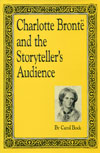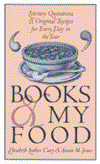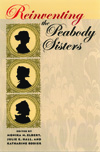Charlotte Brontë and the Storyteller's Audience
"A fascinating and illuminating study of the way Charlotte Brontë's fiction can be seen to mediate between imaginative and actual experience. The book focuses initially on the early Brontë habit of collaborative performance—the creation of 'our plays'—and moves on to show how, reinforced by her adolescent reading, Charlotte Brontë's early self-conscious attitude to storytelling had a significant effect on the conception of her later novels. Bock sees Brontë not as a confessional novelist but as one who was early committed to storytelling as a means for exploring with her readers the relationship between the real and the ideal. This is a book that will be of interest to all those concerned with the fiction-making process."—Christine Alexander
This intelligent study offers a new and appreciative understanding of Charlotte Brontë as a narrative artist. With care and precision, Bock counters the prevailing view of Brontë's fiction as unconsciously confessional, clearly showing her persistent concern with the reader's collaborative role in the storytelling experience.
Bock begins with an examination of the creative milieu at Haworth, where Brontë initially gained an understanding of her craft, and continues with a look at Brontë's relationship with her first audience, Branwell, Emily, and Anne, as well as the influence of her early readings in Scott, Byron, and Blackwood's Magazine. Brontë's juvenile tales are used to describe the model of storytelling that she conceptualized during these formative years—a model which reflects her belief that author and reader meet on the border of actuality and imagination in order to pursue the truths that narrative fiction can contain.
Individual chapters discuss the motif of reading and storytelling in The Professor, Jane Eyre, Shirley, and Vilette and consider the narrative methods which characterize Brontë's relationship with her readers in each of these novels. Bock traces Brontë's development as a storyteller from an early struggle to reconceptualize her audience as she tried to enter the literary marketplace with The Professor to, in her final novel, Vilette, a complex acknowledgment of the ways truth may be encompassed—contained, named, and observed—in fictional narrative and a hopeful account of the creative event in which readers and writers participate. Charlotte Brontë and the Storyteller's Audience also includes a history of the critical reception of Brontë's novels, pointing out some of the interpretive constraints by which the practice of reading her fiction as unconscious confession has limited our understanding of her narrative skill and literary concerns.
Acknowledgments
Abbreviations
I. Storytelling at Haworth
2. The Professor’s Audience: The Private Circle and “The Public at Large”
3. The Political Arts of Reading and Storytelling in Jane Eyre
4. Storytelling and the Multiple Audiences of Shirley
5. Encompassing the Truth: Luce Snowe as Interpretant
Conclusion
Appendix. Reading Brontë’s Novels: The Confessional Tradition
Notes
References
Index





